Buddhist Sacred Art
The Sacred Symbolism Of The Kalachakra Mandala
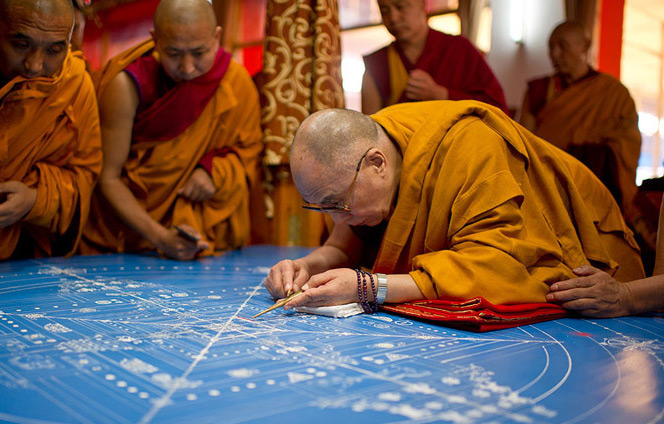
The Kalachakra mandala is definitely one of the most eye-catching thangka painting and appreciated for the symbolic elements that compose it and the visual representation of important teachings of traditional Tibetan Buddhism.
However, as explained by His Holiness the Dalai Lama, many mistaken interpretations have circulated among people who viewed the Kalachakra mandala simply as a work of art.
The Kalacakra tantra is considered the most advanced practice of Vajrayana tradition. This complex system of teachings was originated in India and incorporated into Tibetan Buddhist tradition.
The Dalai Lama himself attends to a series of rituals called “Kalachakra empowerment initiation” and the creation of the Kalachakra mandala is used as a visual textbook for Buddhist practitioners.
The Kalacakra initiation is based on the concepts of time (kala) and cycles (chakra) and, before approaching these rituals, the disciple should have acquired knowledge of the three principal aspects of the Mahayana doctrine: Samsara, Bodhichitta and emptiness.
In this article we will not examine in depth the philosophical aspects of the Tantric initiation but we will focus on explaining the significance of the symbols depicted in the mandala.
First of all it is important to know how to display the Kalachakra mandala correctly. Notice the four different colors of the main inner elements (red, yellow/orange, white and black). The mandala must be oriented with the black side facing down.
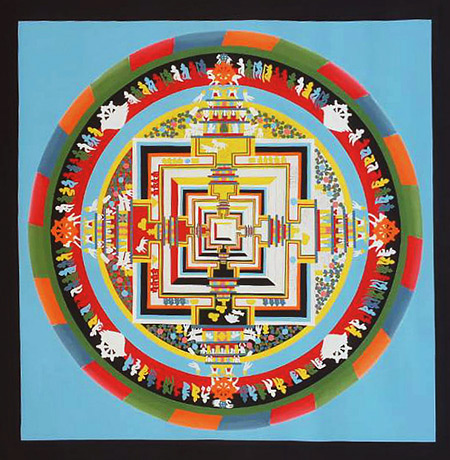
The outer ring is called wisdom circle or protective ring. It is decorated with golden flames and the combination of these colors create a rainbow that symbolize the five aspects of the primordial wisdom and the five Dhyani Buddhas.
After the space ring there are four inner rings representing the four main elements: air, fire, water, and earth.
The central part of the mandala had 3 distinct inner layers called body, speech and mind mandalas.
The geometric structure is the projection of a majestic palace with four gates and five floors.
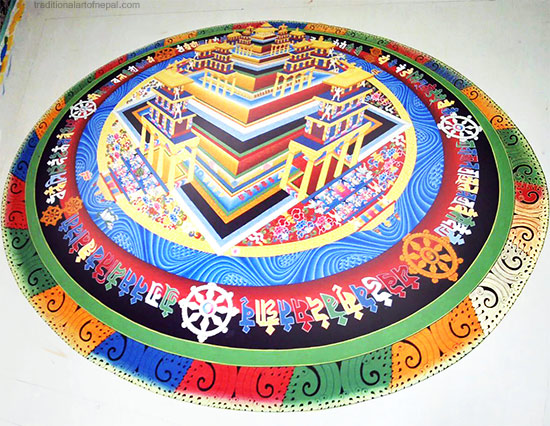
Inside the Body Mandala are represented with syllables and symbols a total of 536 deities. Twelve animals are depicted inside the main gates and protecting the outer walls, representing the months of the year.
The Body Mandala surrounds the Speech Mandala that has the same geometry and inside of which are represented 36 offering goddesses and 80 Yoginis.
The most inner part is called the mind Mandala that occupy the last three floors of the palace and homes 80 deities.
The lotus flower at the center is the symbol of the Buddha mind.
There are several design of thangka paintings of the Kalachakra mandala. In the most complex artworks two deities are depicted in the center of the mandala instead of the lotus flower.
These important deities are Kalachakra and Vishvamata depicted in Yab-Yum: the divine Tantric union that symbolize the cyclic nature of time. This is why the Kalachakra Mandala is also called the “time wheel”.
The Kalachakra Mandala is also represented with one of the most important and well known symbol of the Tibetan Tantric tradition: the Sanskrit seed syllables of the Kalachakra system known as “the mighty ten stacked syllables”.
Each syllable that compose the mantra has a different color and they are represented all interconnected on top of a lotus flower and surrounded by a ring of fire.
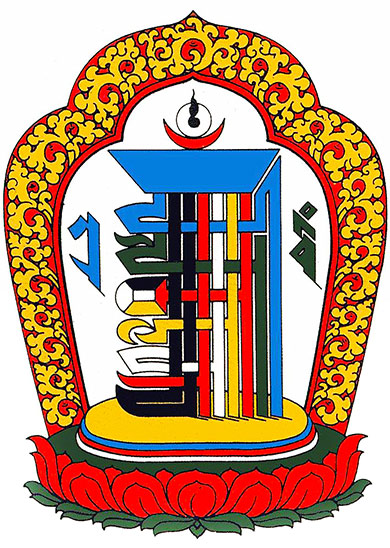
To meditate on the mandala and recite the Kalachakra mantra bring peace of mind and benefits for all sentient beings.
The powerful Kalachakra mantra is spelled: Om Ham Ksha Ma La Va Ra Ya Sva Ha.
Namaste.
Murals of Tibet: Buddhist Art Revealed For The First Time
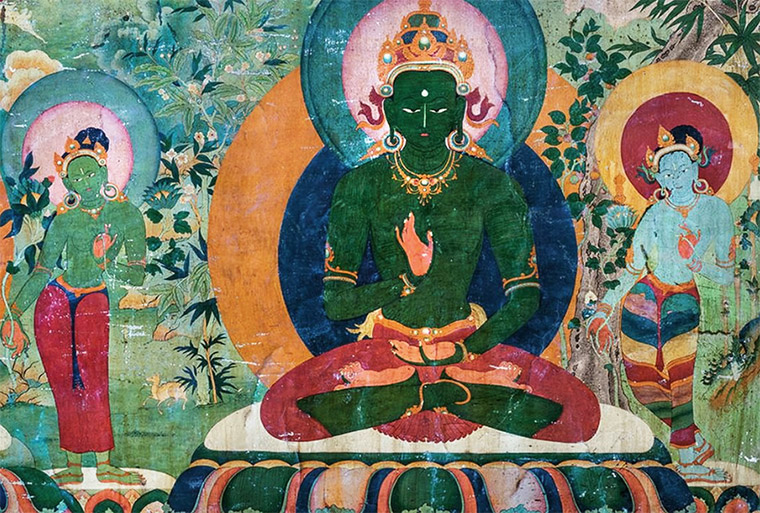
Murals of Tibet – Amoghasiddhi (early 17th century) © Thomas Laird, 2018 / TASCHEN.
Recently Taschen published an outstanding book called Murals of Tibet , featuring the work of photographer Thomas Laird.
The book assembles amazing photos of murals preserved in monasteries and temples in Tibet taken by Laird in 10 years.
Thanks to a sophisticated photographic technique, it was possible to capture the complete murals with copious details of these precious and extraordinary masterpieces.
This collection is the world’s first archive of murals of Tibet illustrated in life-size resolution.
We were overwhelmed by the beauty of these amazing Buddhist artworks and wanted to share with you some of the photos that have been released.
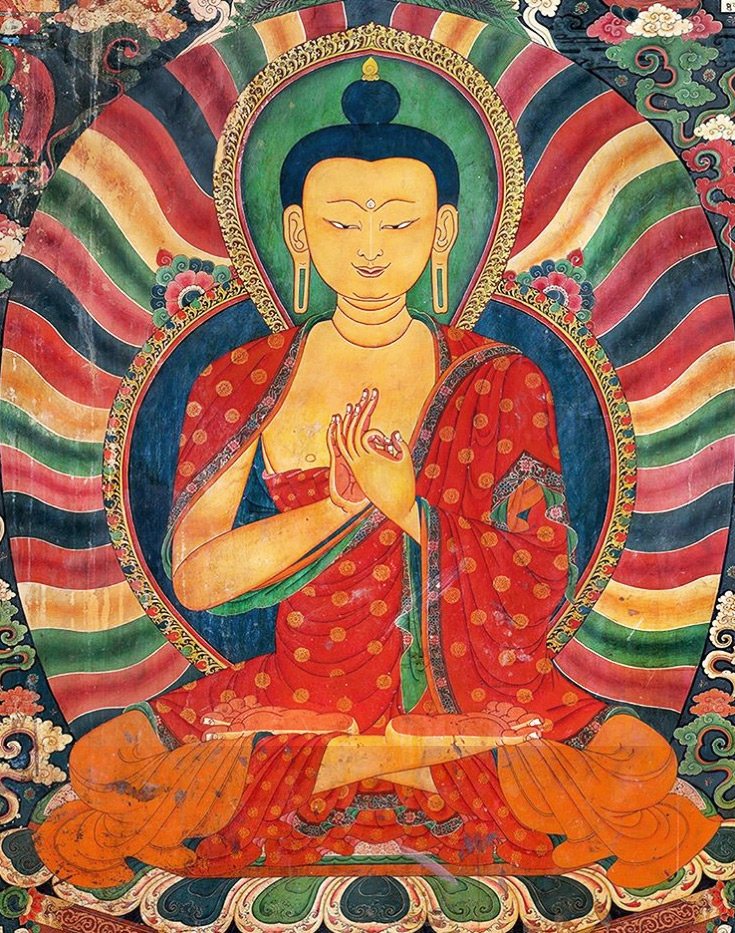
The Buddha displayed on the book cover.
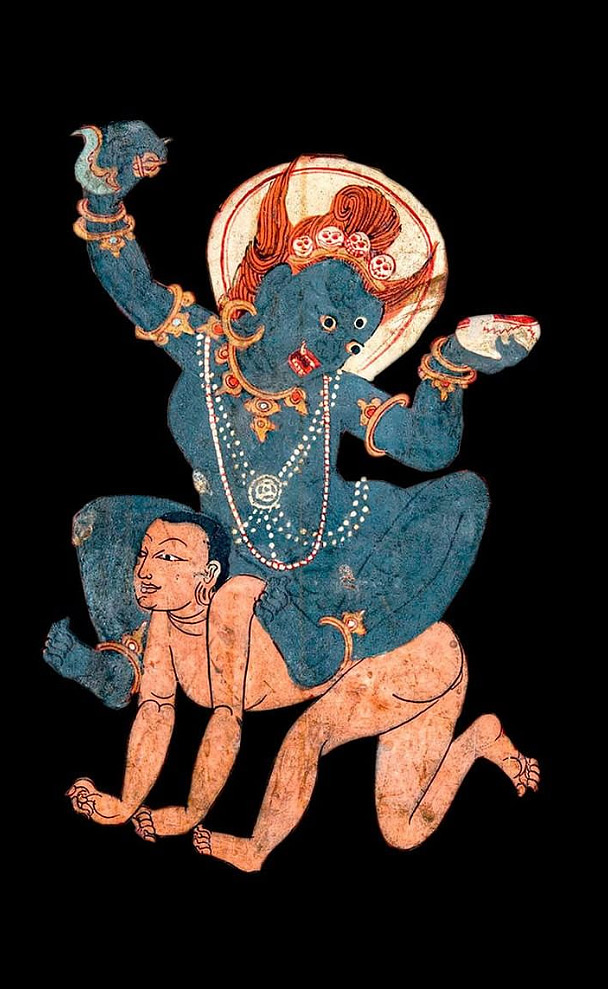
Interesting iconography.
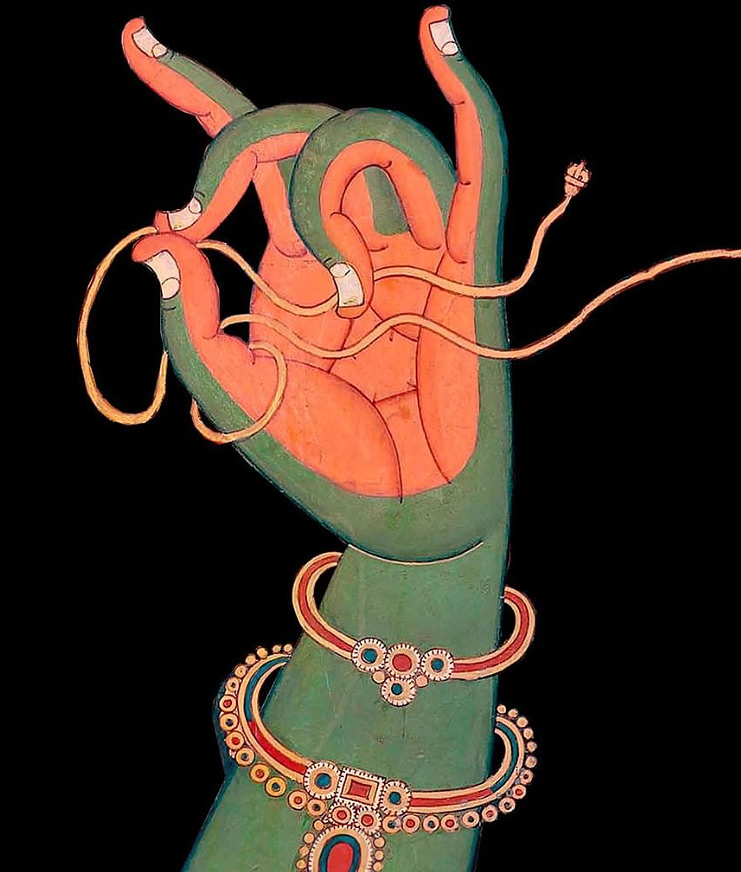
The book is signed by His Holiness the 14th Dalai Lama.
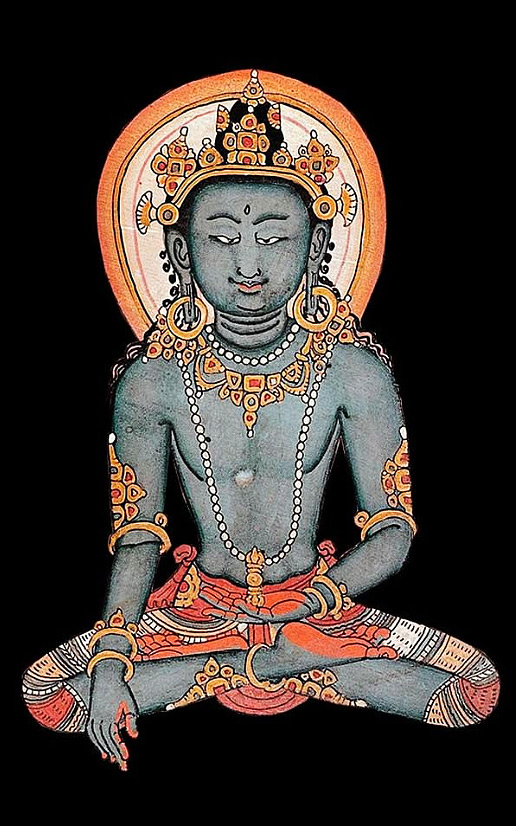
Another beautiful page of the book.
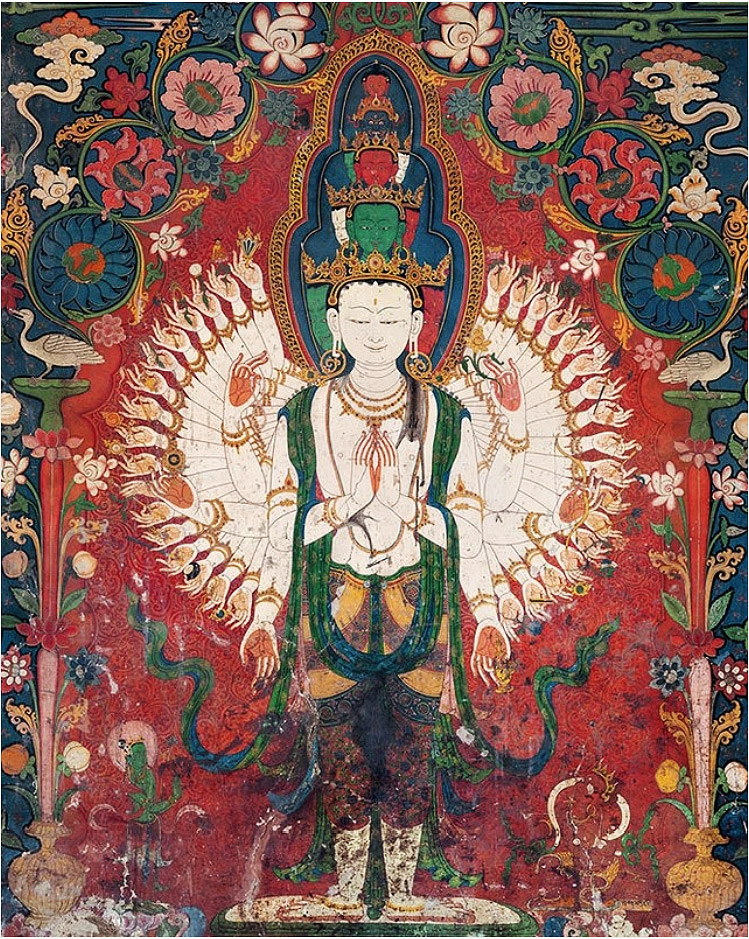
Amazing details of another precious artwork.
Murals of Tibet is quite expensive but, if you have the resources, you can find it at Taschen.com. Click on the book cover to read more or to order the book.
Namaste.
The Wheel of Life Explained
The Wheel of Life or “Bhavacakra” is well known by Buddhist monks as a powerful meditation tool and also by students to learn and understand the teachings of the Buddha. The Wheel represents the very reasons for the suffering of our mortal form, through both horrific and sublime imagery and it can be seen painted on the walls of many Tibetan Buddhist monasteries in all Himalayan regions. 
Essentially it is a metaphysical diagram made up of four concentric circles, held with a firm grip by Yama, the Lord of Death.
Above the wheel the sky with clouds or stars is symbol of freedom from cyclic existence or Samsara, and the Buddha pointing at it indicates that liberation is possible.
In the center of the wheel there are three animals symbols of the “Three Poisons”: ignorance (the pig), attachment (the bird) and anger (the snake).
The snake and bird are shown as coming out of the mouth of the pig, indicating that anger and attachment arise from ignorance. At the same time the snake and the bird grasp the tail of the pig, indicating that they both promote even greater ignorance.
Next to the central circle is the second layer divided in two-half circles, one light colored while the other is usually dark.
These images represent the wheel of Karma, the law of cause and effect.
The darker portion shows individuals experiencing the results of negative actions. The light half circle, instead, indicates people experiencing the results of positive actions and attaining spiritual ascension.
Beyond this layer is a wider area divided into six parts, each depicting a different realm of Samsara.
These six realms constitute all possible states of existence in the universe and all beings cycle between these states.
They can be divided into higher realms and lower realms.
The three higher realms are:
1). The Human Realm
The human realm is the world of everyday experience.
Human life, containing both pleasure and pain, makes us aware of both these aspects of life. Buddhism teaches that such harmonious balance give us the opportunity to pursue spiritual realization, this is the reason why human world is considered to be the most suitable realm for practicing the dharma.
2). The Semi-Gods Realm
The titans that live in this realm, not content with what they possess, spend their time fighting among themselves or making war to the gods.
These semi-gods do not suffer from desire or greed but from constant fighting and jealousy.
3). The Realm of the Gods
These gods are pictured like beings not so far from the human dimension in fact they share similar sensuous experiences.
The gods enjoy lives full of abundance and pleasure however they spend their existence pursuing meaningless distractions and never think to practice the dharma. This way they deplete their good Karma and they will suffer through being reborn in the lower realms.
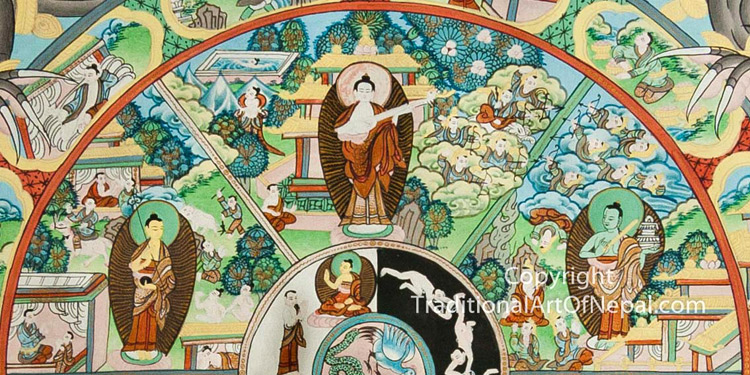
The three lower realms are:
4). The Hell Realm
The hell is typically represented as a places of intense torment where beings endure unimaginable suffering. The victims are subjected to the most terrible tortures inflicted by demons.
In the Buddhist tradition there are eighteen “hells” that can be hot or cold.
5). The Hungry Ghosts Realm
This realm is inhabited by pathetic creatures with suffering from extreme and perpetual hunger and thirst.
They wander constantly in search of food and drink, however even if they get what they want it will cause them intense agony.
6). The Animals Realm
In this realm life is based on self-preservation. Animals live in constant fear and suffer from being attacked and eaten by other animals. Metaphor of refusal to see beyond the physical needs.
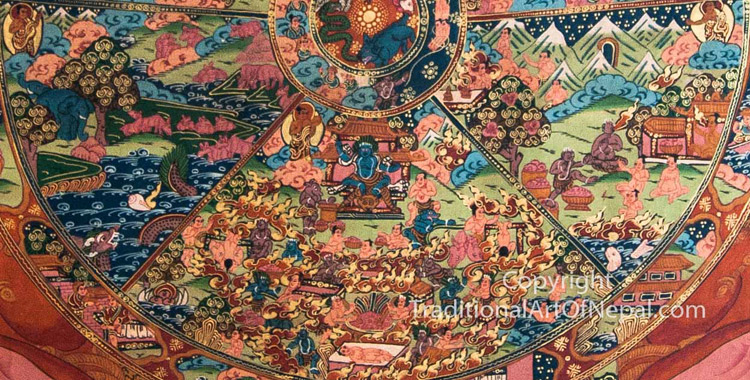
Depicted inside each realm, in some wheel of life representations, there is a Buddha or bodhisattva trying to help the beings living in that realm to find their way to nirvana.
The outermost concentric ring of the Wheel of Life present the process of cause and effect in detail.
The circle is divided into twelve parts, each depicting a phase of the law of Karma which keeps us trapped in the six realms of cyclic existence.
The twelve causal links and the correspondent allegories are:
Avidyā: Ignorance – a blind man, often walking.
Saṃskāra: Mental Formations – a potter shaping a vessel.
Vijñāna: Consciousness – a man or a monkey grasping a fruit
Nāmarūpa: Name and form – two men afloat in a boat
Ṣaḍāyatana: Six senses – a dwelling with six windows
Sparśa: Contact – two lovers kissing or entwined
Vedanā: Feeling – a men with an arrow in the eye
Tṛṣṇa: Craving – a drinker receiving drink
Upādāna: Grasping – a man or a monkey picking fruit
Bhava: Existence – a couple engaged in intercourse or a standing reflective person
Jāti: Rebirth – a woman giving birth
Jarāmaraṇa: Aging and Death – a corpse being carried
Bhavacakra Thangka paintings usually contain an inscription on the bottom explaining the process that keeps us in Samsara and how to reverse that process according to the teaching of the Buddha that said:
I have shown you the path that leads to liberation
But you should know that liberation depends upon yourself.
The Wheel of Life is also known as:
- Wheel of becoming
- Wheel of cyclic existence
- Wheel of existence
- Wheel of rebirth
- Wheel of Saṃsāra
- Wheel of suffering
- Wheel of transformation
A beautiful book that we suggest for a more detailed analysis of the symbolism of the Bhavachakra is The Tibetan Wheel of Existence: An Introduction by Jacqueline Dunnington, published and distributed by Tibet House US. A monograph on the famous Buddhist icon with seventeen color plates illustrating this fundamental teaching device created by the Buddha.
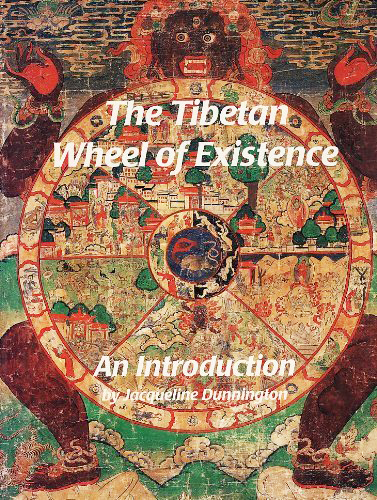
How To Order
- Browse our catalog and choose your favorite design.
- Select your preferred size and quality to check the price.
- Click on “Product Inquiry” to send us a message and we will check if we the artwork is immediately available. If not we will make it for you.
- Use the cart page to calculate the shipping cost by selecting your country.
- Once we receive your order we will start creating the artwork according to your preferences and provide you with updates and images upon your request.
We strive to ensure a smooth shopping experience with our assistance. We also welcome commissions of custom designs of thangkas, masks and mandalas.
Shipping and Payments
We offer trusted shipping options to ensure your purchases arrive in perfect condition, and delivered in 5 to 10 working days worldwide. We accept PayPal, debit/credit cards and bank wire transfer services.
About Our Community
We live in Changunarayan, a UNESCO heritage site located on a forested hill overlooking Bhaktapur and the Kathmandu valley. You are welcome to visit our art school and meet our community of artists and artisans.
Learn More About Our Thangka School And Workshops
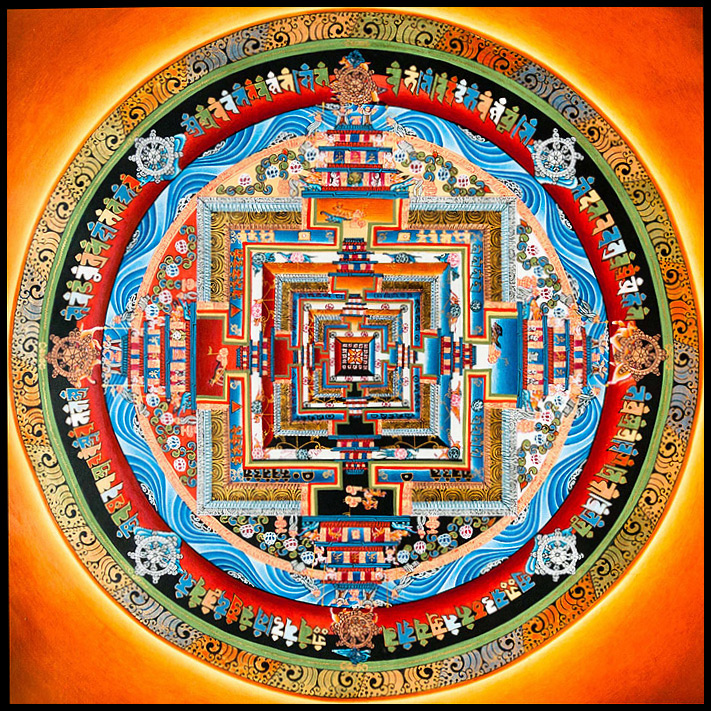
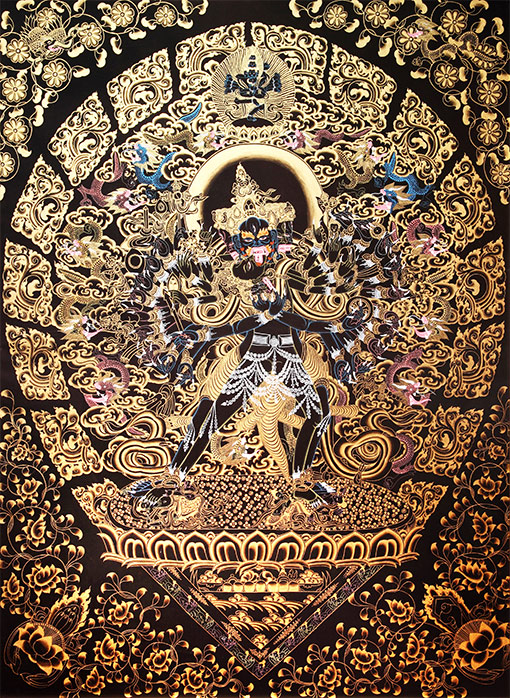
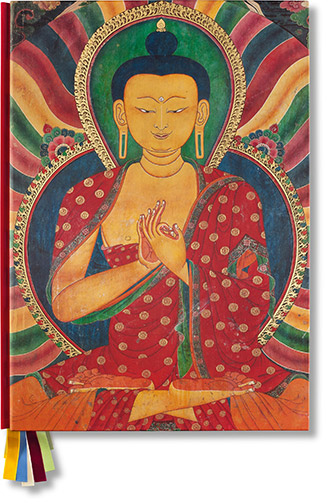

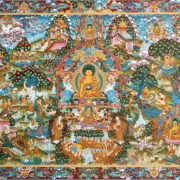 Life of Buddha Master Thangka
Life of Buddha Master Thangka 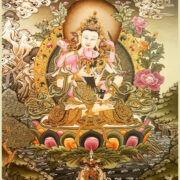 Vajrasattva
Vajrasattva 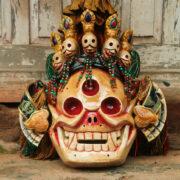 Citipati Mask
Citipati Mask 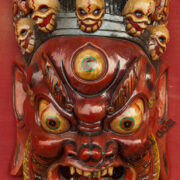 Red Mahakala Mask
Red Mahakala Mask 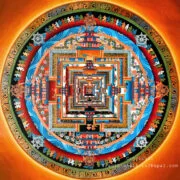 Kalachakra Mandala
Kalachakra Mandala 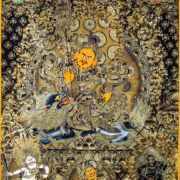 Five Jambhala Thangka
Five Jambhala Thangka 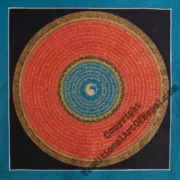 Triple Yin-Yang Mandala
Triple Yin-Yang Mandala 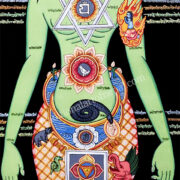 Chakraman Yogi
Chakraman Yogi 